Scientific names: Echinocereus triglochidiatus and Echinocereus coccineus
Common names: claret cup cactus
Plant family: Cactaceae
In Memory of Our Great Friend
John (Obie) Oberhausen
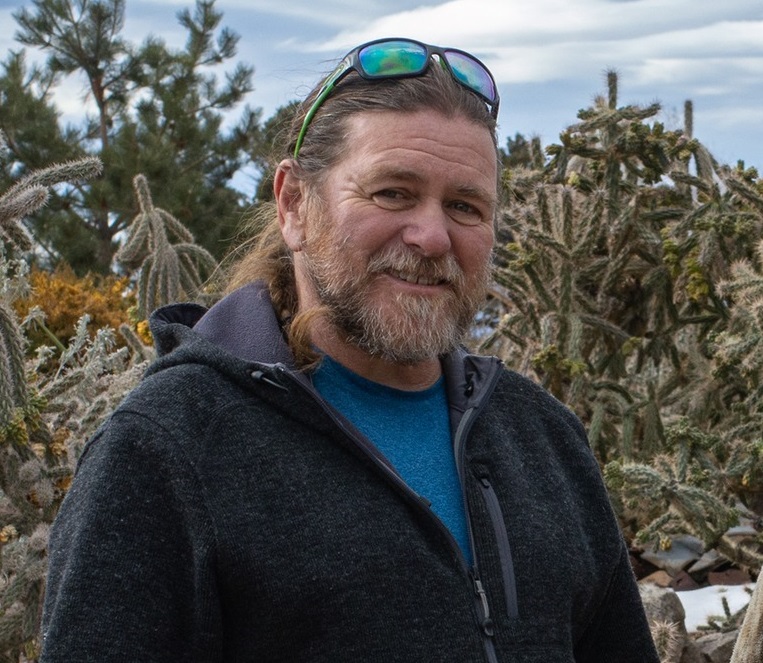
John “Obie” Oberhausen. Photo: Cactus Rescue Project Facebook, https://www.facebook.com/cactusrescueproject/
Tribute by Wendell S. (Woody) Minnich
President of the Santa Fe Cactus and Succulent Club
Past Conservation Chair for the Cactus and Succulent Society of America (CSSA)
Rarely are we lucky enough to have a good friend like Obie. As we all know, Obie’s contributions to the botanical world have been very beneficial to many individuals as well as many organizations. His work with the Santa Fe Botanical Garden has been very well received by all of those who have seen his beautiful cactus and succulent landscape. He also did another dramatic entry garden for the Eldorado community, which is most fantastic in the spring when all the flowers highlight the horizon. Obie was also an original member of the Santa Fe Cactus and Succulent club. He often contributed to the club’s success and he was well received for his energetic presentations. From Santa Fe to Albuquerque to Denver, CO, he also helped to create many beautiful cold hardy gardens, and as with his artistic touch, he brought forth many fantastic cacti and other plants commonly found in our high desert environments.
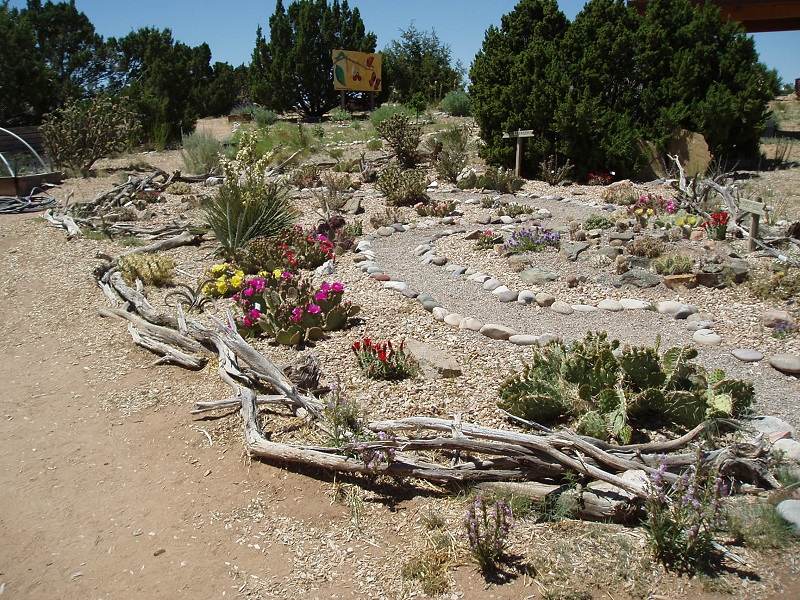
Cactus garden by Obie Oberhausen.
Most people know Obie for his work with salvaging the rare Santa Fe cholla, Cylindropuntia × viridiflora (Britton & Rose) F.M.Knuth. For many years this plant was thought to be highly endangered and it faced the possibility of soon becoming extinct. With his work to propagate this special species, it is now known to be growing in many places. With replanting in its original habitat, as well as many gardens, this interesting cholla is now in healthy numbers in many places. Along with the famous Santa Fe cholla, Obie also worked with many other stunning cold hardy cacti. The two most prominent cactus species he used that come to mind for me are: Echinocereus triglochidiatus and Echinocereus coccineus. Each of these two species is commonly known as “Claret Cup Cactus.”
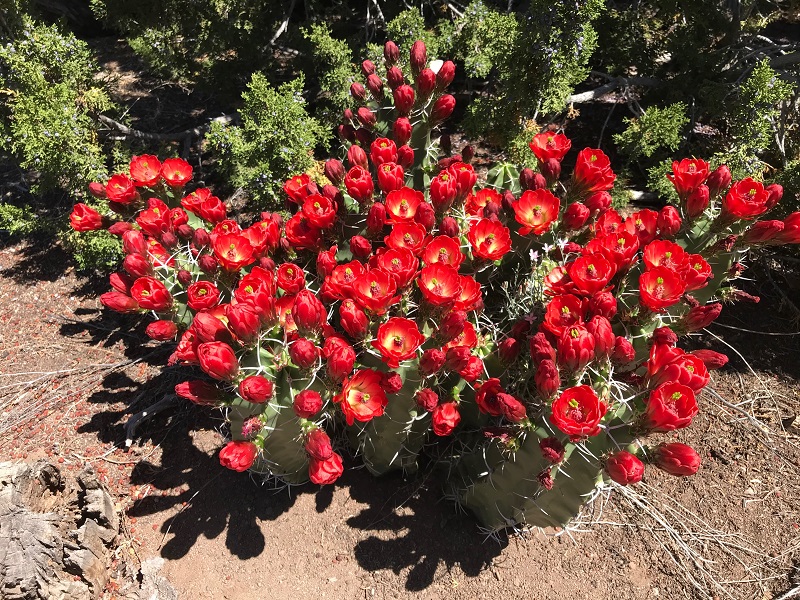
Echinocereus triglochidiatus near cedar Grove, NM. Photo courtesy of Woody Minnich.
In honor of Obie, we are dedicating these two species to his memory. The Claret Cup Cacti are mostly known for their extraordinarily large red flowers. Most people grow these outstanding cacti because when spring comes, we can hardly wait as these cacti become the garden’s center of focus with their glowing red bouquets.
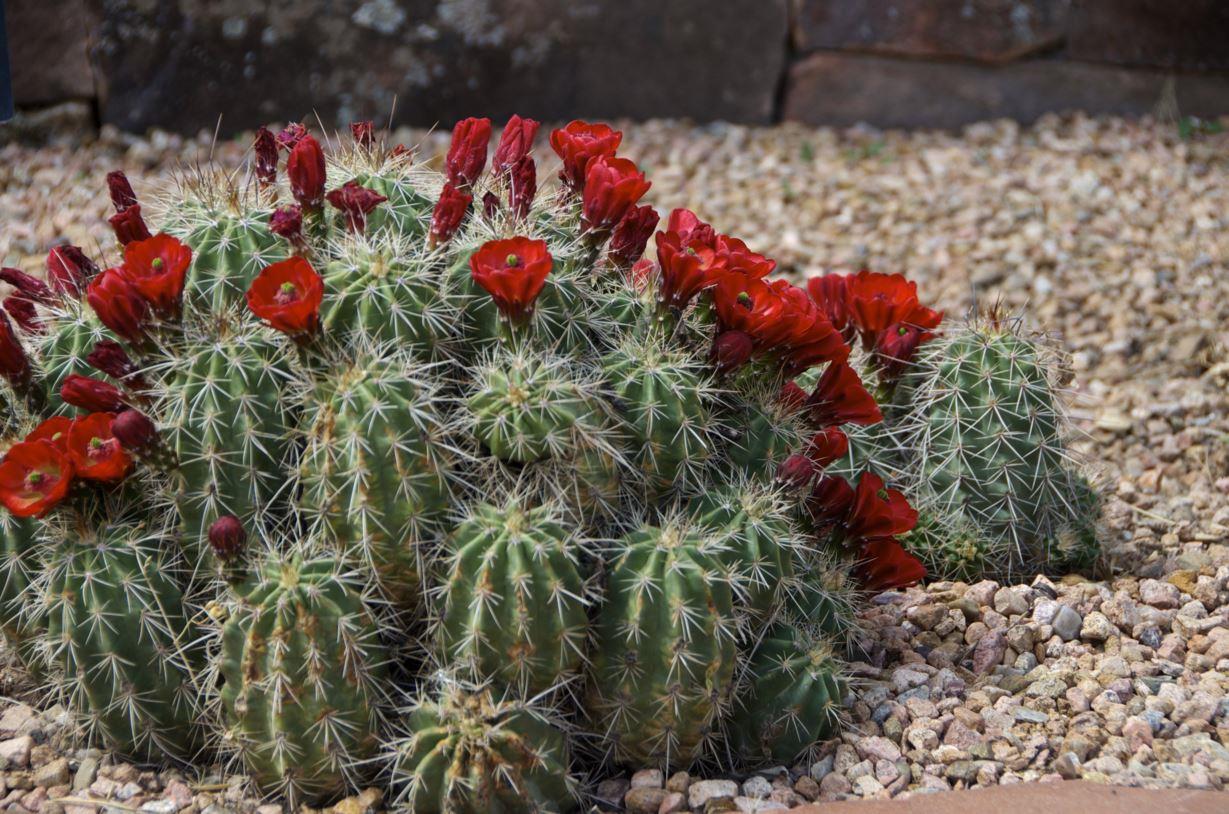
Echinocereus coccineus in the Santa Fe Botanical Garden. Photo by Janice Tucker
We are lucky to live in the general habitats for these fascinating cacti. Both of these species are classically found in piñon juniper forests ranging from 5,000 ft to about 8,000 ft, and sometimes higher elevations. Their native habitats are found in Arizona, California, Colorado, New Mexico, Nevada and Utah. One can often also find these plants as the centerpiece in our cold hardy rock gardens. Their spines are sometimes very heavy, and with Echinocereus triglochidiatus often few in number, 3 to 5 spines per aureole. Echinocereus coccineus differs in that its spines are generally finer in character and usually more numerous, 5 to 12 spines per aureole. Both of these species generally make large mound clusters of many tight heads. Sometimes these species will make clusters up to two feet across and during the summer months up to 18 inches tall. Because these two species grow in very cold winter settings, they often shrink down in height preparing for the harsh, snowy freezing conditions. During this transition, they frequently develop beautiful red to purplish epidermal coloring.
These two species are a good way to remember Obie. When you see their 2-inch diameter red flowers, each of their numerous flowers become Obie’s memorial celebration.
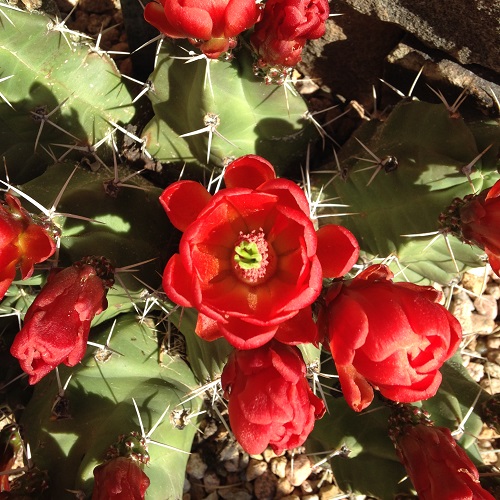
Echinocereus triglochidiatus flower in Santa Fe Botanical Garden.
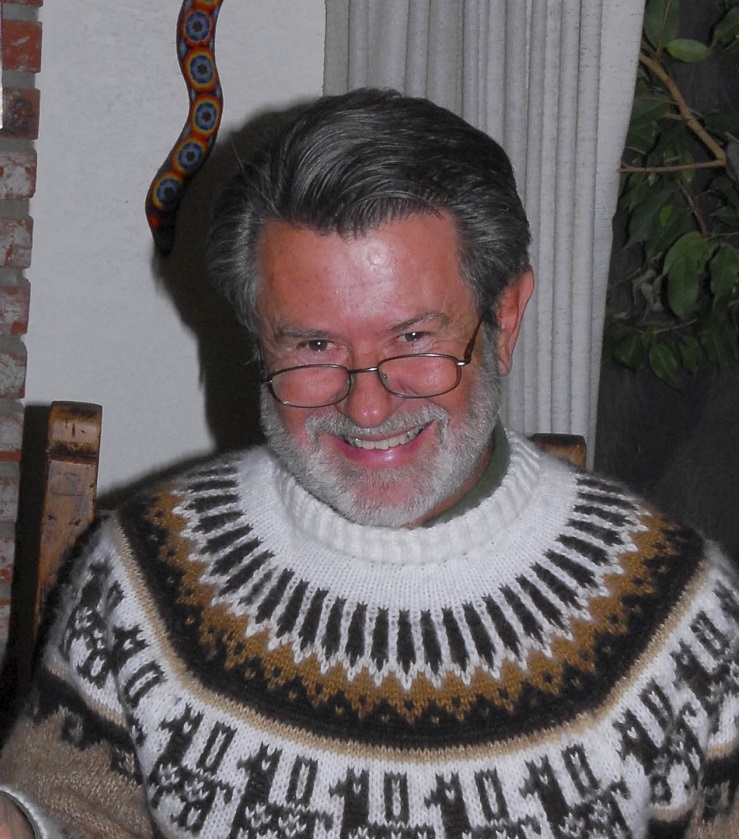
Wendell “Woody” Minnich
These two terrific winter hardy cacti are often available from many of our nurseries. Usually you can get individual young plants at reasonable prices, and with time they can become nice large specimens. One of the great things about getting smaller plants is that you can watch them grow along with your knowledge. It is best to avoid buying the sometimes-available large expensive field collected specimens, as they often don’t acclimate well. We also need to protect our natural field populations as these plants are a big part of their ecosystems. Often when hiking in our great outdoors it is wonderful to come across these two species of cacti, especially when in flower. Obie flowers!
Wendell S. (Woody) Minnich
President of the Santa Fe Cactus and Succulent Club
Past Conservation Chair for the Cactus and Succulent Society of America CSSA
Read more about Obie on the Garden Blog.
John “Obie” Oberhausen, 1959-2022. Santa Fe New Mexican.
From the Cactus Rescue Project
There will be a CELEBRATION OF LIFE for Obie on June 4, 2023 at the Eldorado Community Center when the Cactus Gardens will be blooming and we can honor and remember this incredible man.


